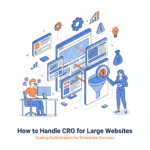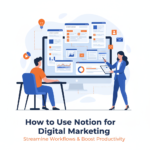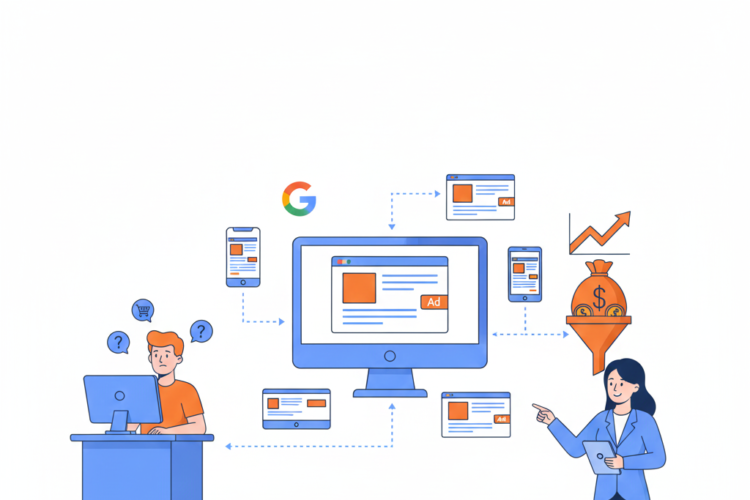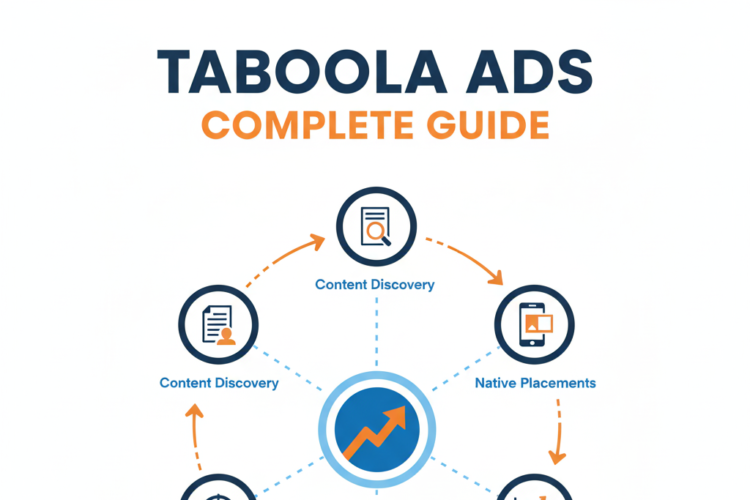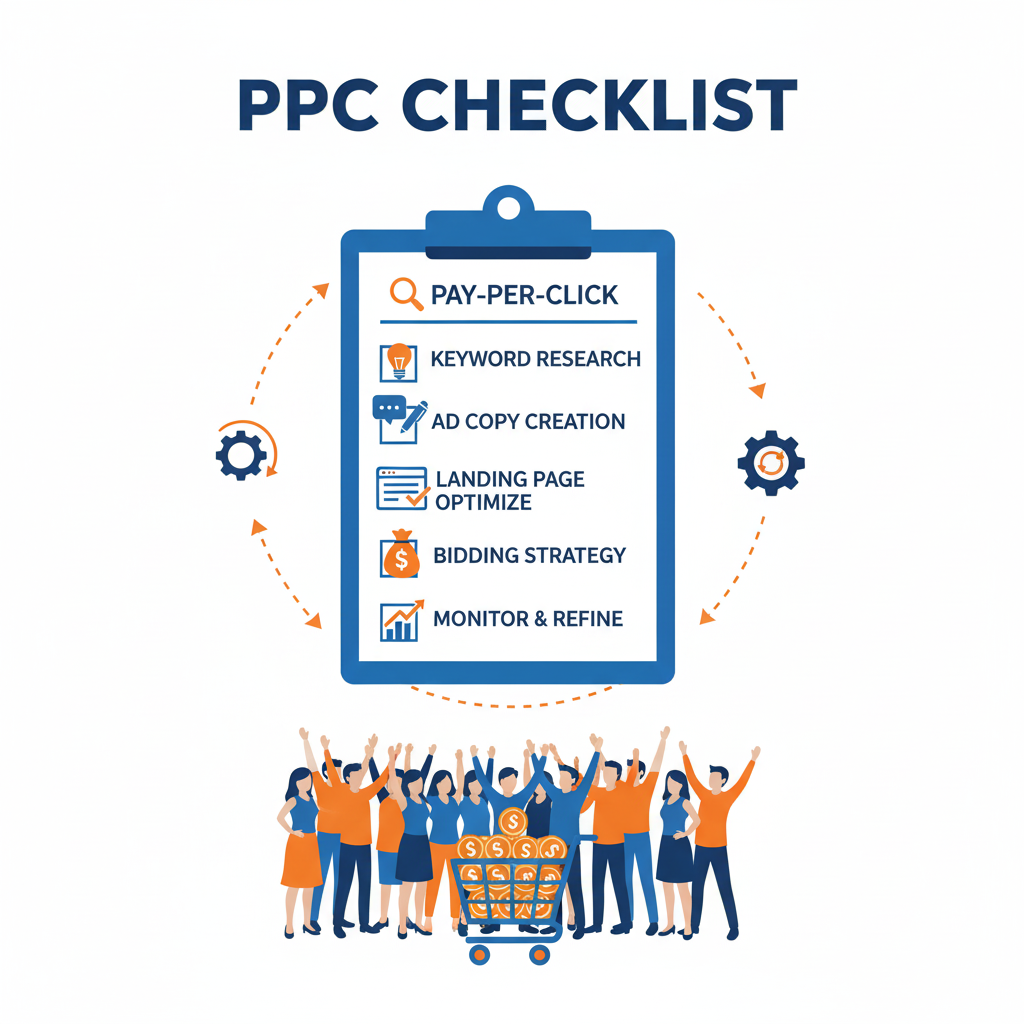
PPC Checklist: The Ultimate Step-by-Step Guide
Introduction
Pay-per-click (PPC) advertising remains one of the most effective digital marketing strategies to drive instant traffic, generate leads, and boost conversions. But running a successful PPC campaign is much more than just setting up ads and choosing a few keywords. It requires strategic planning, data analysis, continuous optimization, and a well-structured checklist to ensure that every part of your campaign is performing at its best.
In this detailed guide, we’ll walk through the ultimate PPC checklist that covers everything you need — from account setup to tracking and optimization. Whether you’re managing campaigns on Google Ads, Bing Ads, Meta Ads, or LinkedIn Ads, this checklist will help you streamline your workflow and maximize your ROI.
1. Pre-Campaign Research and Planning
Before launching any PPC campaign, proper groundwork ensures efficiency and accuracy. Let’s start with the fundamentals.
1.1 Define Your Goals and KPIs
Every PPC campaign must have a clear objective. Ask yourself:
Are you aiming for brand awareness, lead generation, or sales?
What are your primary KPIs — CTR, CPC, CPA, ROAS, or Conversion Rate?
Example:
E-commerce → Maximize ROI & Sales Volume
SaaS → Increase Signups & Reduce CAC
Local Business → Drive Calls or In-store Visits
Defining your KPIs will help you track performance and measure success effectively.
1.2 Know Your Target Audience
Understanding your target market is essential. Gather insights such as:
Demographics: Age, gender, income, education, etc.
Geographics: Location, region, or language.
Psychographics: Interests, behaviors, intent signals.
Use tools like:
Google Analytics (GA4) for audience behavior.
Meta Audience Insights for interests and demographics.
Semrush or SimilarWeb for competitor audience data.
1.3 Competitive Research
Competitor analysis helps you identify gaps and opportunities.
Key steps:
Identify main competitors using SpyFu, Ahrefs, or SEMrush.
Analyze their ad copy, landing pages, and offers.
Study their keyword strategy — which keywords are driving their traffic?
Examine ad extensions and creative formats they use.
Pro Tip: Use tools like Auction Insights in Google Ads to see how often your ads appear compared to competitors.
1.4 Budget and Bidding Strategy
Estimate your monthly and daily ad spend before starting.
Decide between:
Manual CPC — more control, good for experienced marketers.
Automated Bidding (Smart Bidding) — Google optimizes for conversions or CPA.
Budget Formula Example:
If you aim for 200 conversions at ₹500 CPA,
→ Total Budget = 200 × ₹500 = ₹100,000
Always allocate 10–20% of your budget for A/B testing and optimization.
2. Account and Campaign Setup Checklist
Once research is done, it’s time to structure your account for clarity and performance.
2.1 Create a Logical Campaign Structure
A clean account structure enhances control and reporting.
Structure Example:
Account → Campaign → Ad Group → Keywords → Ads
Campaign Segmentation Ideas:
By product/service category.
By geographic region.
By funnel stage (top, middle, bottom).
By audience type (remarketing vs prospecting).
2.2 Keyword Research
Keyword research is the backbone of any PPC campaign.
Steps to find the right keywords:
Start with Google Keyword Planner or Ahrefs.
Analyze search intent (informational, commercial, transactional).
Group keywords based on topics or themes.
Use a mix of broad match, phrase match, and exact match.
Build a negative keyword list to exclude irrelevant traffic.
Pro Tip: Long-tail keywords often have lower CPC and higher intent.
2.3 Ad Copywriting Checklist
Your ad copy should be persuasive, relevant, and keyword-focused.
Best Practices:
Include your main keyword in the headline.
Highlight your unique selling proposition (USP).
Add numbers, power words, and emotional triggers.
Use a strong call-to-action (CTA) such as “Get Started,” “Shop Now,” or “Book a Free Demo.”
Maintain ad copy relevance with landing page content.
Ad Example:
Headline: Get 30% Off Custom Shoes Today
Description: Shop handcrafted shoes built just for you. Free shipping + easy returns.
2.4 Ad Extensions (Assets)
Extensions increase ad visibility and CTR. Always use these:
Sitelink Extensions – link to additional pages.
Call Extensions – add a phone number.
Location Extensions – show your address.
Callout Extensions – highlight key benefits.
Structured Snippets – show product categories.
Image Extensions – add visuals to your ad.
Pro Tip: The more extensions you add, the higher your ad’s Quality Score potential.
2.5 Landing Page Optimization
Even the best ad can fail if your landing page doesn’t convert.
Checklist:
✅ Page load speed < 3 seconds.
✅ Mobile responsive and minimal distractions.
✅ Clear CTA buttons (“Buy Now,” “Get a Quote,” etc.).
✅ Use persuasive copy matching ad messaging.
✅ Add trust signals (testimonials, reviews, certifications).
✅ Optimize forms – fewer fields = higher conversions.
✅ Install conversion tracking pixels.
Tools: Unbounce, Instapage, HubSpot, or custom-built landing pages.
3. Tracking and Analytics Setup
Data tracking is critical for campaign success.
3.1 Conversion Tracking
Set up conversion actions such as:
Form submissions.
Purchases.
Phone calls.
Newsletter sign-ups.
Tools:
Google Ads Conversion Tracking
GA4 Event Tracking
Google Tag Manager (GTM)
Pro Tip: Assign a monetary value to each conversion to calculate ROI effectively.
3.2 Google Analytics Integration
Connect GA4 with your Google Ads account to:
Track behavior of paid users.
Measure bounce rate, pages/session, and goal completions.
Create remarketing audiences.
3.3 Pixel Setup
Install pixels for remarketing and cross-channel tracking:
Meta Pixel (Facebook)
LinkedIn Insight Tag
Microsoft Advertising UET Tag
4. Launch and Optimization Phase
4.1 Pre-Launch Testing Checklist
Before going live:
✅ Review ad copies and URLs.
✅ Double-check targeting settings (location, language, device).
✅ Ensure correct conversion tracking.
✅ Verify budget caps and bid strategies.
✅ Test your landing page functionality (forms, buttons, checkout).
4.2 Monitor Campaign Performance
Once launched, monitor daily metrics:
Impressions
Clicks
CTR (Click-through rate)
CPC (Cost per click)
Conversion Rate
CPA (Cost per acquisition)
Use Google Ads dashboard and GA4 to analyze behavior flow.
4.3 Optimize Keywords
Pause non-performing keywords.
Add negative keywords regularly.
Increase bids for top-performing keywords.
Analyze Search Terms Report weekly.
4.4 A/B Testing
Never stop testing!
Test elements like:
Ad headlines & descriptions.
Landing page layouts.
CTAs & button colors.
Bidding strategies (manual vs automated).
Run tests for 2–4 weeks to gather reliable data.
4.5 Quality Score Improvement
Google uses Quality Score (QS) to determine ad rank and CPC.
To improve QS:
Increase ad relevance.
Improve expected CTR.
Optimize landing page experience.
High QS = lower CPC + better positioning.
5. Reporting and Scaling
5.1 Weekly & Monthly Reports
Track performance with structured reports:
CTR, CPC, CPA, ROAS
Conversion volume and trends
Top-performing keywords & ads
Demographic insights
Tools: Google Data Studio, Looker Studio, Supermetrics.
5.2 Scale Winning Campaigns
Once campaigns are stable and profitable:
Increase budget gradually (10–15% weekly).
Expand to new keyword sets.
Launch remarketing and lookalike audiences.
Replicate success across other platforms (e.g., Meta, LinkedIn, Bing).
5.3 Ongoing Optimization
PPC is not a one-time task. Keep improving by:
Refining ad copy monthly.
Reviewing keyword performance weekly.
Testing new creatives quarterly.
Updating audience segments as trends evolve.
6. Bonus: PPC Optimization Tools to Use
Here’s a list of must-have PPC tools:
| Category | Tools |
|---|---|
| Keyword Research | Google Keyword Planner, Ahrefs, SEMrush, Ubersuggest |
| Competitor Analysis | SpyFu, SimilarWeb, iSpionage |
| Ad Copy & Design | Canva, ChatGPT, Copy.ai |
| Tracking & Analytics | Google Tag Manager, GA4, Hotjar |
| Automation & Scripts | Optmyzr, Adzooma, Google Ads Scripts |
| Reporting | Looker Studio, Supermetrics |
Conclusion
A successful PPC campaign is built on research, precision, testing, and data-driven decisions. This checklist ensures that no aspect of your campaign — from keyword selection to optimization — goes unchecked.
In 2025, automation and AI-driven bidding will continue to grow, but manual strategy, creative insight, and optimization discipline will always remain the backbone of successful PPC management.
Use this guide as your go-to reference before launching, managing, or scaling your next PPC campaign — and watch your ROI soar.
Author
